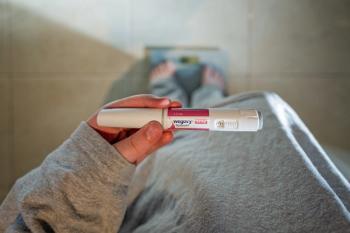
Empagliflozin Slows Renal Disease Progression in Type 2 Diabetes
New data from the EMPA-REG OUTCOME trial showed the sodium-glucose cotransporter 2 (SGLT2) inhibitor empagliflozin (Jardiance) significantly reduced the incidence of worsening kidney disease in type 2 diabetes patients.
New data from the EMPA-REG OUTCOME trial showed the sodium-glucose cotransporter 2 (SGLT2) inhibitor empagliflozin (Jardiance) significantly reduced the incidence of worsening kidney disease in type 2 diabetes patients.1
Original results from the trial showed empagliflozin reduced the risk of major cardiovascular (CV) adverse events in patients with type 2 diabetes at high risk. Although this was the primary goal of the study, kidney disease progression in patients with type 2 diabetes was a pre-specified secondary objective. To achieve it, researchers randomly assigned patients with type 2 diabetes and an estimated glomerular filtration rate (eGFR) <30 mL/min/1.73 m2 to receive either empagliflozin (10 mg or 25 mg) or placebo once-daily.
The first pre-specified renal outcome was incident or worsening nephropathy, defined as progression to macroalbuminuria, doubling of serum creatinine level, initiation of renal-replacement therapy, or death from renal disease. Other renal microvascular outcomes were a composite of incident or worsening nephropathy or death from CV causes, individual components of incident or worsening nephropathy, and incident albuminuria in patients with a normal baseline albumin level.
A total of 7020 patients received at least 1 dose of a study drug. At baseline, more than 99% of the patients had established CV disease, and 17.8% had an eGFR of 45 to 59 mL/min/1.73 m2, while 7.7% recorded 30 to 44 mL/min/1.73 m2. Meanwhile, 28.7% had microalbuminuria, and 11% had macroalbuminuria.
In total, 80.7% of the patients were taking angiotensin-converting enzyme (ACE) inhibitors or angiotensin-receptor blockers (ARB) at baseline. The median duration of treatment in the study was 2.6 years, and the median observation time was 3.1 years.
Incident or worsening nephropathy occurred in 525 of 4124 patients (12.7%) in the empagliflozin group and 388 of 2061 (18.8%) in the placebo group. This benefit was consistently seen across pre-specified subgroups and the 2 empagliflozin doses.
The composite outcome of incident or worsening nephropathy or CV death was significantly lower in the empagliflozin group than the placebo group.
Progression to macroalbuminuria occurred in 459 of 4091 patients (11.2%) in the empagliflozin group and 330 of 2033 (16.2%) in the placebo group—a statistically significant relative risk reduction of 38%. Doubling of serum creatinine level occurred in 70 of 4645 patients (1.5%) in the empagliflozin group and in 60 of 2323 (2.6%) in the placebo group—a statistically significant relative risk reduction of 44%.
There was no statistically significant between-group difference in the rate of incident albuminuria, which occurred in 1430 of 2779 patients (51.5%) in the empagliflozin group and 703 of 1374 (51.2%) in the placebo group. The adverse event profile of empagliflozin in patients with impaired kidney function at baseline was similar to what was reported in the overall trial population.
One limitation is that the results can’t necessarily be generalized to patients with type 2 diabetes at lower CV risk due to study design, or to black patients because of the small sample size. Regardless, the results are significant because type 2 diabetes is a major risk factor for macrovascular and microvascular disease, and kidney disease develops in approximately 35% of patients with type 2 diabetes and is associated with increased mortality. Additionally, about 44% of the renal dialysis population is comprised of those with diabetes.
Intensive glucose-lowering strategies have been shown to reduce surrogate markers of renal complications in patients with type 2 diabetes; however, evidence for improvement in advanced renal complications has been limited.
The authors of an accompanying editorial wrote that although the study results appear encouraging, they’re “not a ‘home run’ with regard to the management of diabetes.”2
“In the coming years, controlled and comparative effectiveness trials that uniformly combine newer agents with older agents may help to delineate an even more effective treatment plan for the millions of people whose lives are affected by type 2 diabetes,” they wrote.2
The study results were published the same day the FDA
References
1. Wanner C, Inzucchi S, Lachin J, et al. Empagliflozin and progression of kidney disease in type 2 diabetes. N Engl J Med. 2016 Jun 14.
2. Ingelfinger J, Rosen C. Cardiac and renovascular complications in type 2 diabetes — is there hope? N Engl J Med. 2016 Jun 14.
Newsletter
Stay informed on drug updates, treatment guidelines, and pharmacy practice trends—subscribe to Pharmacy Times for weekly clinical insights.

















































































































































































































